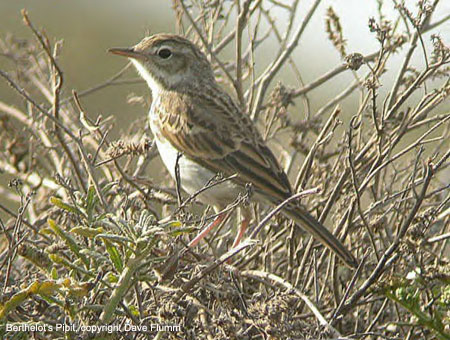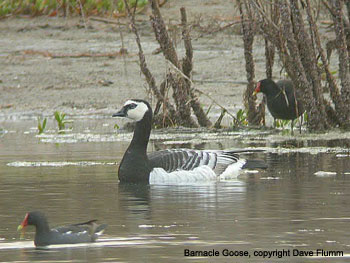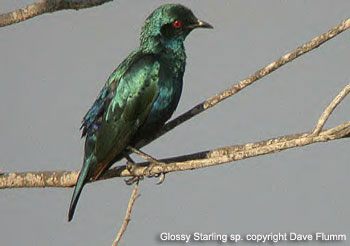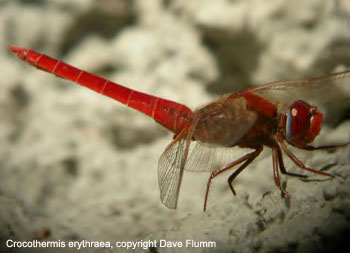

Cory's Shearwater (c740) Variable numbers day to day with max 480 counted flying west in half an hour (1550-1620hrs) on 11th off Punta del Pasito.
Little Egret (21) Widespread with max count 16 on 9th when 15 were counted along the relatively undisturbed coastline at Castillo del Romeral.
Grey Heron (23) Only 1-2 daily but a magnificent flock of 19 flying very high in a north-easterly direction up the coast off Playa del Ingles on 7th @ 1815hrs.
Night Heron (12) Flock of 11 flew north-east at Playa del Ingles @ 0900hrs on 6th. First-winter circled Maspalomas lagoon on 12th but flew off north-east. In addition a very distant flock of 16 herons considered to be of this species flew north-east 5-6km off Playa del Ingles 1620hrs on 7th but were just a tightly packed group of dots in my scope!
Squacco Heron (2) Listed as "Accidental", two were at Maspalomas lagoon on 5th.
Teal (1) Female at Maspalomas lagoon 3rd- 8th.
[Barnacle Goose (1) Single bird from 0730hrs at Maspalomas lagoon on 11th had gone next day. This species was also recorded in Austria, Hungary and Switzerland last month and is listed as 'Accidental' to Morocco but is probably more likely to have been an escape.]

Sparrowhawk (1) One hunting over the dune scrub at Maspalomas on 13th was a surprise and may have been a migrant rather than the Canary race, A.n.granti which apparently doesn't occur on Gran Canaria.
Buzzard (22) Widespread, even seen around hills at Playa del Ingles and Maspalomas. Up to 13 in a day - when we visited the interior. Local race is B.b.insularum.
Kestrel (80) Common and widespread. Max count 28 on 7th during a tour of the interior. A single bird perched at Maspalomas lagoon on one day looked rather small and very dark, heavily streaked underneath almost Merlin-like and must have been at the extreme end of the range of this race, F.t.canariensis which is only found in the western group of the Canary Islands.
Barbary Falcon (1) Adult with prey (Collared Dove?) over Maspalomas on 14th came in off the sea and departed westwards.
Red-legged Partridge (6) 3 pairs in the Barranco de Guayadeque, north of Aguimes on 12th.
Quail (2) Single at Maspalomas on 4th was almost caught by two of the (5) glossy starlings, which pursued it across the dunes. Another flew between the hotels along the seafront at Playa del Ingles on 5th.
Moorhen (64) 62 on Maspalomas lagoon with 2 just inland. All adults except for 3 juveniles.
Coot (1) Single at Maspalomas lagoon 2nd - 8th.
Black-winged Stilt (1) Single at Maspalomas lagoon 2nd - 4th.
Grey Plover (4) Only recorded Maspalomas lagoon & beach and at Castillo del Romeral beach.
Little Ringed Plover (6) 3 pairs at Maspalomas lagoon.
Ringed Plover (19) Mostly at Maspalomas lagoon.
Kentish Plover (15) Daily. All at Maspalomas lagoon.
Snipe (3) 3 at Maspalomas lagoon 10th, 2 remaining to 12th.
Whimbrel (12) Widespread but usually singly.
Greenshank (3) 2 at Maspalomas lagoon most days and 1 Castillo del Romeral.
Dunlin (1) 1 Castillo del Romeral 10th.
Sanderling (c143) Daily. Mostly at Maspalomas lagoon and beach where 143 were counted on 14th.
Little Stint (1) Single at Maspalomas lagoon 9th - 14th.
Common Sandpiper (3). 1-2 at Maspalomas lagoon most days and 1 Castillo del Romeral.
Turnstone (18) 18 at Castillo del Romeral on 9th.
Lesser Black-backed Gull (10) No more than 6/day but probably overlooked.
Yellow-legged Gull (c450) 450 counted one morning flying north past our hotel at Playa del Ingles. This was a regular movement with birds heading north up the coast from dawn and returning at dusk. Where they spent the day, I never discovered and I rarely saw more than 10 together anywhere during the day. These are the dark-backed L.m.atlantis subspecies and probably obscured more L.fuscus than I identified on fly-overs.
Sandwich Tern (7) Up to 7/day. Seen on 5 dates 7th - 14th.
Feral Pigeon/Rock Dove (c900) Large flocks of pigeons wherever you go.
Collared Dove (c330) Common & widespread around habitation, less so in the hills.
Turtle Dove (23) Almost daily with max count 10 on 9th.
Monk Parakeet (c80) Roosting flocks of up to 57 at Maspalomas oasis and 10 at Playa del Ingles with few others elsewhere. (Free-flying birds at the zoo, Los Palmitos Park not included in total.)
Rose-ringed Parakeet (7) At least 3 at Maspalomas oasis and 4 at Playa del Ingles.
Plain Swift (c320) Seen daily. By far the commonest swift. Max count of 185 on last day.
Common Swift (c40) Not recorded until 7th and then daily 11th-14th but probably under-recorded and some of the distant swifts in the hills could have been this species rather than Plain.
Pallid Swift (c14) Daily 11th-14th suggested an influx. Race is A.p.brehmorum.
Alpine Swift (5) 2 around our hotel 13th with 5 next day. Same birds included?
Hoopoe (30) Widespread. Up to 15/day.
Swallow (42) Only 1 by 4th but then daily 8th-14th with 17 on 11th.
Red-rumped Swallow (5) One at Maspalomas lagoon 5th with 2 there 12th and 2 more north-east of dunes there same day. All flew off north-eastwards.
House Martin (39) 1 on 4th. Not then recorded until another on 12th but 22 13th and 15 14th.
Sand Martin (3) 1 on 11th at Maspalomas lagoon with 2 there 14th.
Lesser Short-toed Lark (20) All birds seen in the stony plain south of Castillo del Romeral. Paired up and displaying. Local race C.r.polatzeki.
Berthelot's Pipit (42) Widespread. Up to 13/day.
Tawny Pipit (2) Single bird in dunes behind Maspalomas lagoon on 8th with 2 together there next day.
Grey Wagtail (8) Max 5 in the hill towns on 7th. Local race M.c.canariensis.
White Wagtail (3) 3 at Maspalomas lagoon 4th.
Spanish Wagtail (2) Single male M.f.iberiae at Maspalomas lagoon on 4th and beach at Playa del Ingles on 5th. A 'flava' type heard only at Maspalomas lagoon on 8th.
Wheatear (1) Male in dunes behind Maspalomas lagoon 8th & 9th only.
Blackbird (c120) Common & widespread. Local race T.m.cabrerae.
Spectacled Warbler (2) A pair at nest in stony plain scrub south of Castillo del Romeral on 9th.
Sardinian Warbler (c55) Common and widespread. Even in our hotel grounds. Local race S.m.leucogastra.
Subalpine Warbler (c16) Female at Maspalomas lagoon scrub 5th with a male there 7th and 2 males at Pozo Izquierdo same day. 4 males Maspalomas lagoon scrub 8th with 5 males and 3 females there next day when a male was also seen in scrub south of Castillo del Romeral. None 10th but a female Maspalomas 11th with 2 there 12th followed by 2 males there 13th.
Blackcap (8) No more than 4/day. Local race S.a.heineken.
Canary Island Chiffchaff (c86) Common and widespread. Up to 24/day. Seen feeding young at Playa del Ingles.
Common Chiffchaff (2) Single P.c.collybita in different areas at Maspalomas 11th & 12th.
Blue Tit (9) 1 San Bartolome and 2 pairs Santa Lucia 7th. 1 Los Palmitos Park and a pair at Ayagaures reservoir 11th. 1 Barranco de Guayadeque on 12th. Local race P.c.teneriffae.
Southern Great Grey Shrike (8) 2 pairs in the Maspalomas area, few others elsewhere. Race L.m.koenigi.
Woodchat (3) Single male at Maspalomas lagoon scrub 7th-9th with 3 there on latter date.
Raven (2) Singles at Mirador de Tasartico and near Fataga. Local race C.c.tingitanus.
Starling (4) Seen daily at Maspalomas where 3-4 birds nesting in bridge just north of the lagoon. A single bird at Playa del Ingles (one of these?) on 1st.
Spanish Sparrow (c600) Common & widespread. Up to 250/day.
Canary (44) Commoner in the hills but also seen regularly in the Canary pines along the promenade at Playa del Ingles.
Goldfinch (31) Widespread but no more than 13/day. Local race C.c.parva.
Trumpeter Finch (8) 6 in the stony plain south of Castillo del Romeral and 2 in another dry, coastal barranco somewhere. Local race B.g.amantum.
Common Waxbill (107) Daily at Playa del Ingles and Maspalomas. At dusk birds would fly north-east to roost, passing by our hotel balcony and regular counts revealed a peak of 107 birds one evening. Whether these included birds from Maspalomas or Los Palmitos Park is unknown but this is probably unlikely.
[Lesser Blue-eared Glossy Starling, Lamprotornis chloropterus. Up to 5 at Maspalomas lagoon area were possibly escapes but their status is still to be confirmed. On 4th, two of the birds tried to catch a Quail, pursuing it across the dunes before it escaped under cover; behaviour perhaps rather atypical for a cage-bird? All sightings as follows: 3 on 4th, 5th & 11th with a single bird 7th and flock of 5 12th.]

[Village Weaver,Ploceus cucullatus. Two male
Village Weavers, Ploceus cucullatus were present at Maspalomas lagoon area on 11th & 12th. On the 11th they were joined by a Lesser Masked Weaver,Ploceus intermedius,also a male. The status of both these species has yet to be established. In addition single male weavers, presumably one of the above birds were seen in flight only on 4th & 10th in the same area.]
[Pied Crow One flew over Maspalomas hotels near the lighthouse in a westerly direction @ 1030hrs on 2nd. Either it, or another individual was seen 7 days later flying south-west over Castillo del Romeral, 16km north-east of Maspalomas @ 1103-1111hrs on 9th but as with the above mentioned, this species could also be an escape]
Other wildlife
Butterflies included Small Whites (commonest species), Red Admirals (4), Indian Red Admirals (3), African Migrant (1), Monarchs (c8), single Bath White and Clouded Yellow but oddly no Painted Ladies, which were the commonest species in Fuerteventura in Feb. last year when I saw up to 150 in a day. Dragonflies included both Emperor and the more common Lesser Emperor and a single Scarlet Darter. In addition a single Sympetrum and Orthetrum have yet to be identified. A Hummingbird Hawk-moth was seen at the dam at Ayagaures reservoir on 11th. Reptiles included the Gran Canaria Giant Lizard, Gallotia stehlini (common with up to 40/day) and the Haria Lizard, Galiotia atlantica (1-2 only). The only mammals seen, other than the all too common feral cat, were rabbits and they appeared to be restricted to the dune scrub around Maspalomas lagoon (4/day max).

Dave Flumm
21st March 2004.